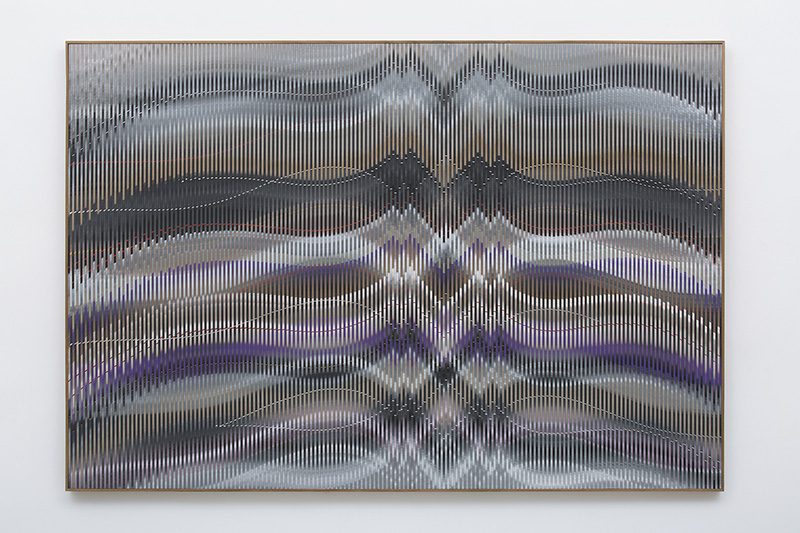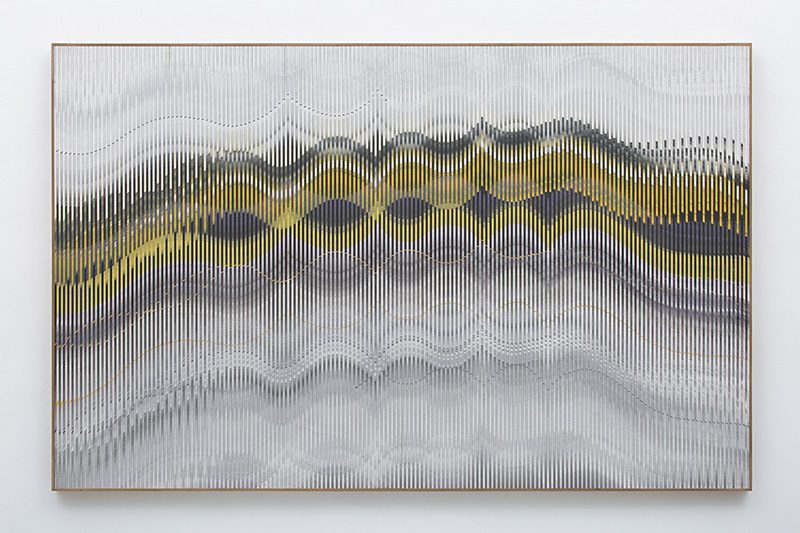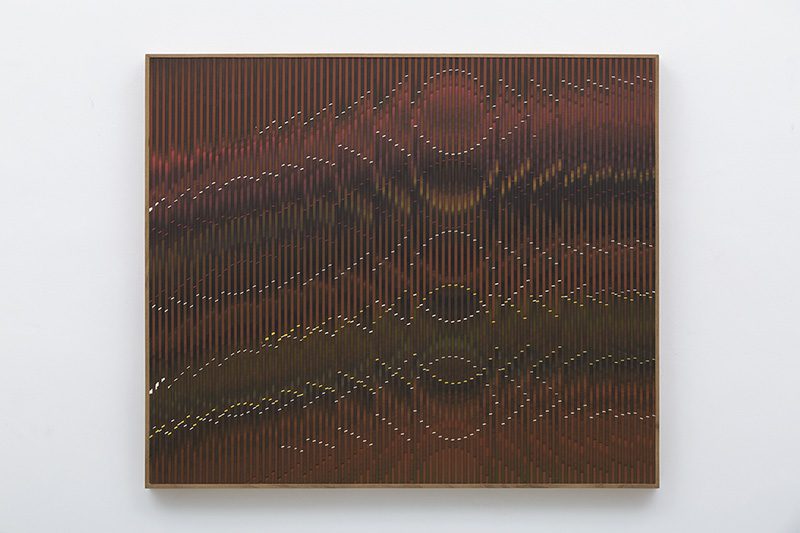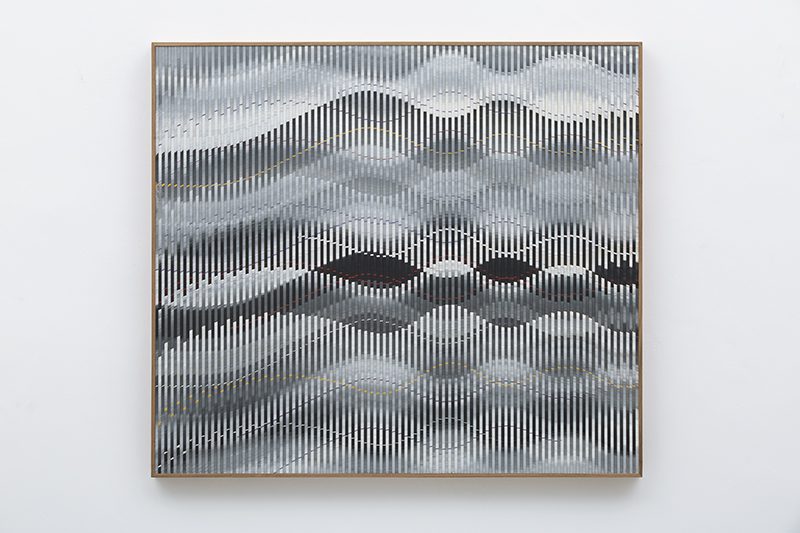ART-PRESENTATION: Abraham Palatnik
 The term “kinechromatic” was coined in 1951 by Mario Pedrosa to refer to the work of Brazilian artist, Abraham Palatnik. Palatnik initially created electro-mechanical devices, based on the kaleidoscopic principle, which projected a constantly changing pattern of coloured light on a screen. Later devices exposed coloured moving parts of the machinery. In all cases, the shape and colour observed were changed by the devices for a stationary observer.
The term “kinechromatic” was coined in 1951 by Mario Pedrosa to refer to the work of Brazilian artist, Abraham Palatnik. Palatnik initially created electro-mechanical devices, based on the kaleidoscopic principle, which projected a constantly changing pattern of coloured light on a screen. Later devices exposed coloured moving parts of the machinery. In all cases, the shape and colour observed were changed by the devices for a stationary observer.
By Efi Michalarou
Photo: Galeria Nara Roesler Archive
Galeria Nara Roesler presents a solo exhibition of Abraham’s Palatnik works spanning from the 1970’s to present date, also for the gallery participates in Frieze New York’s Spotlight section with a presentation of rarely seen historical works of the artist. This is the artist’s first solo exhibition since his 1965 solo presentation at Howard Wise Gallery “Cinecromaticos by Abraham Palatnik of Brazil”. One of Brazil’s most prolific and recognized Kinetic Artists, at 88 Palatnik continues to develop new techniques, inspiring new generations of artists worldwide. In 1951, Abraham Palatnik shocked the jury of the 1st Sao Paulo Biennial with “Azul e Roxo em Primeiro Movimento”, his first Kinechromatic work. The Brazilian jury ruled it out on the ground that it did not fit in any of the categories foreseen in the regulations. However, the Biennial committee allowed it to be shown in a room allocated to Japanese artists who failed to appear. Nevertheless he was excluded from the catalogue. The work was then seen by another jury, composed of international visitors, who considered it to be an important manifestation of Contemporary Ar. Palatnik participated at the Sao Paulo Biennial (1955, 1957, 1959, 1961, and 1965), and at the Venice Biennial (1964). By 1964, Palatnik was showing alongside some of the leading names in the world of kinetic art at the “Mouvement 2” exhibition organized by the Galerie Denise René in Paris. In 1968, Palatnik began to use duplex paperboard to build his “Progressive Reliefs”. But instead of using its surface, he piled up several pieces, creating a cluster whose top was cut off afterwards. His reliefs, which had different depths, resulted in optical structures. Light passes through its interstices, creating partially illuminated areas that seem to open and close according to the movement of the viewer. In the following decades, Palatnik used three new materials: in the ’70s, he used polyester resin, in the ’80s strings on canvas and in the ;90s, a plaster and glue compound. With the latter, which was applied onto the canvas with a tube whose mouthpiece served as paintbrush, the artist filled the space with a vibrant and colorful graphism that, nonetheless, maintained its progressive feature. In the progressions with polyester resin, he primarily explored the transparency of the material. Always avoiding the use of paintbrush and pigments, Palatnik created in 1988 a series of “Duco on paperboard” paintings, which were later glued to wooden fiberboard. It is a painting that is not contaminated by the subjectivity of the painter. The ten 37,5 x 37,5 cm paintings that comprise the series were all put in a wooden box as if they were a collection or a portable museum. Around the year 2004, Abraham Palatnik began to create a new series whose name was simply “W”. At first sight, it may seem to be a sequel to his progressive reliefs. And it actually is. But it goes beyond by proposing a discussion on the activation of the support, on its materiality, regarding the abstract and/or figurative occupation of the surface.
Info: Galeria Nara Roesler, 47 West 28th Street, 2nd floor, New York, Duration: 3/5-30/7/16, www.nararoesler.com.br



